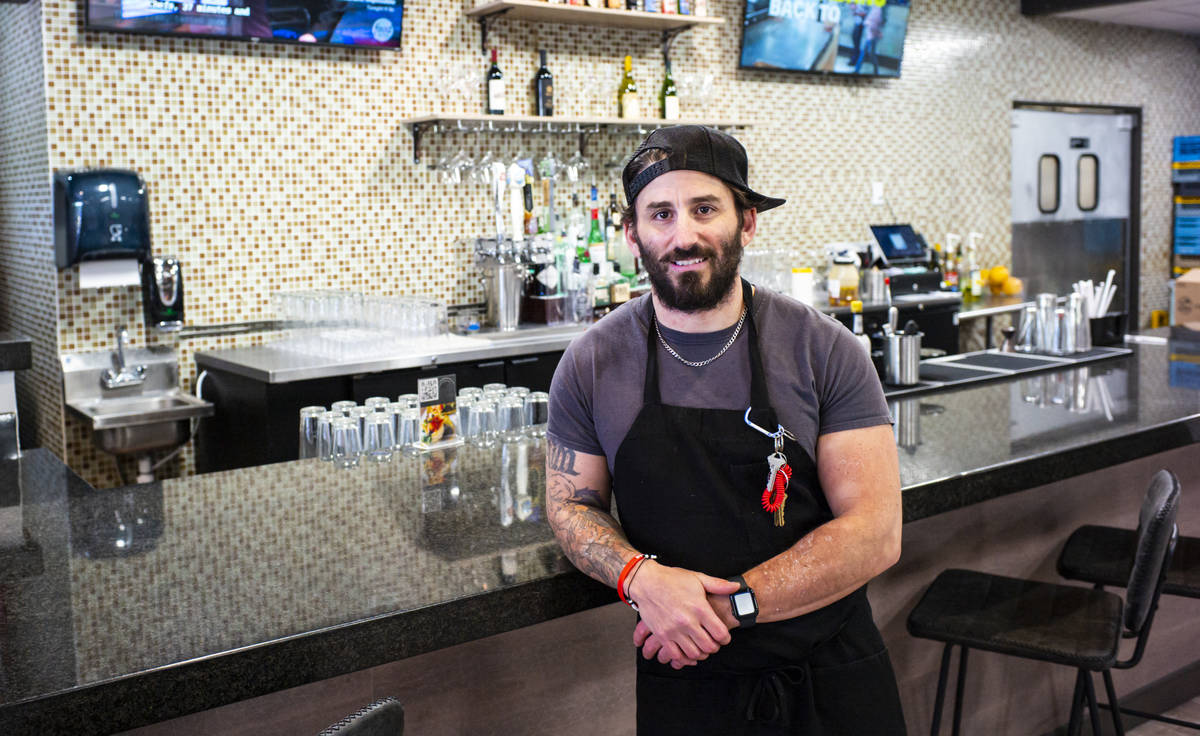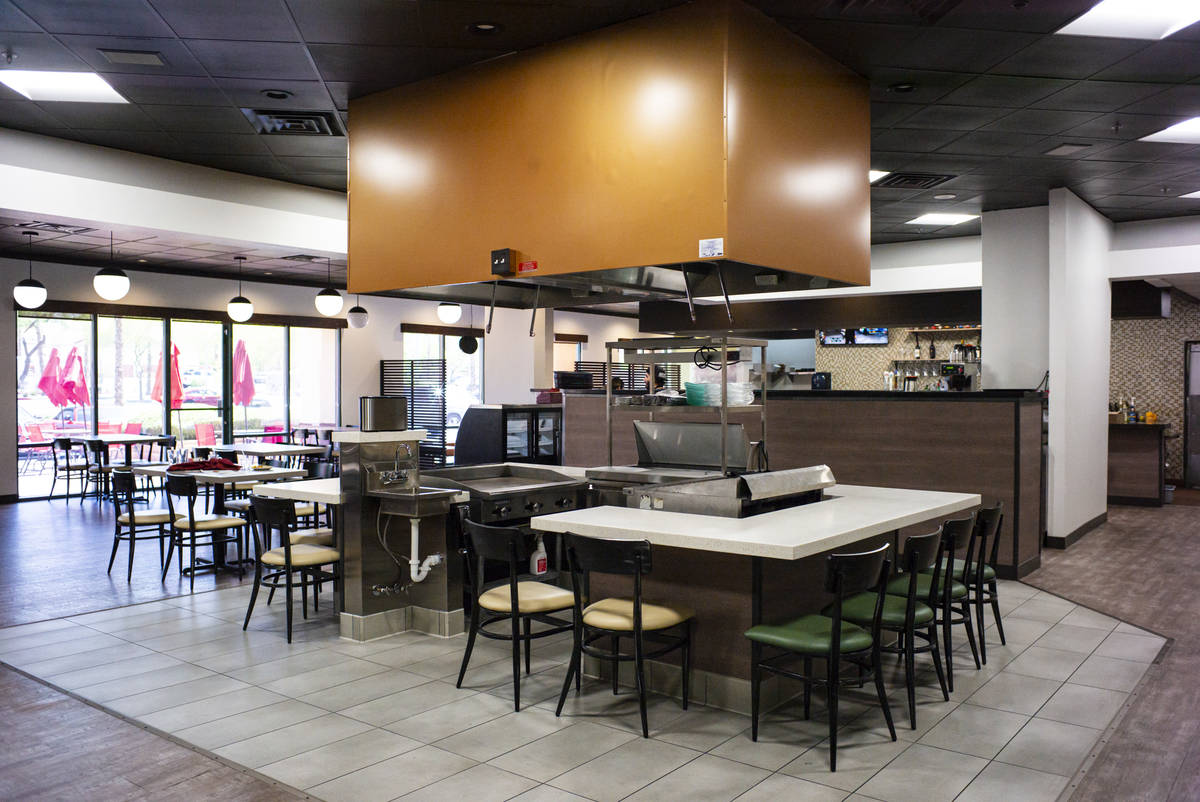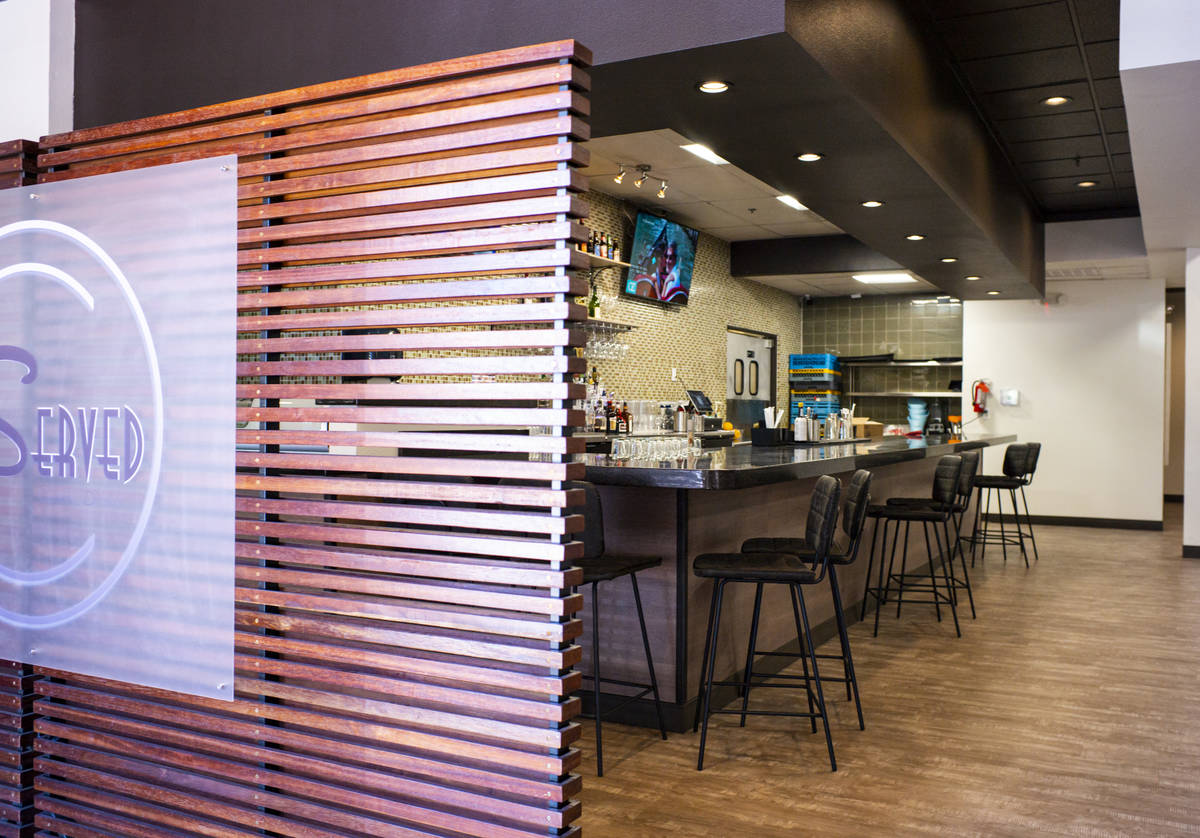Las Vegas Valley restaurant owners struggle with worker shortages
If you’ve been to a restaurant or bar recently, you’ve no doubt felt it up close and personal: The industry’s labor shortage continues unabated, leading to long waits as skeleton crews of servers, kitchen staff and bartenders press to fill the gap. And there’s no end in sight.
Industry representatives have blamed the shortage on a mixture of high unemployment benefits, COVID fears and child-care challenges, but Jeffrey Bank has another theory.
“The world is reopening,” said Bank, CEO of Alicart, which has restaurants in New York, Atlantic City, Washington, D.C., and the Bahamas as well as Carmine’s at The Forum Shops at Caesars and Virgil’s Real Barbecue in The Linq Promenade.
“When was the last time in history this many jobs were created in four weeks, six weeks? This is a tsunami of an opening. Employees have a chance to decide where they want to work.”
But increasingly, that may not be in the restaurant industry. Saru Jayaraman, director of the Food Labor Research Center at the University of California, Berkeley, said a survey recently conducted by the center found that 53 percent said they’re leaving the industry or considering leaving, with 76 percent saying they’re leaving because of low income. And she said it’s not a recent phenomenon.
“Honestly, this is just so frustrating right now, because we’ve been screaming at the top of our lungs for the last year that this was happening,” said Jayaraman, who’s also the president of One Fair Wage, an advocacy group fighting to raise the subminimum wage for tipped employees. “People are leaving in droves. It’s kind of a mass exodus.”
And low wages aren’t the only reason.
“Sexual harassment, hostility and health risks are way up,” she said, adding that the Centers for Disease Control and Prevention has said that restaurants were the most dangerous places to work in relation to COVID-19 risk — more dangerous than hospitals.
Jayaraman maintains that there was an industry labor shortage before the pandemic.
“People left last year and decided not to go back,” she said. “A lot of workers decided it’s not worth it.”
Jeff Waddoups, chairman of the Department of Economics at UNLV, said low pay has long plagued the restaurant sector.
“Employers have been able to get away with paying pretty low wages in the past,” he said “Part of the shock to them is that they can’t get away with that any more. Workers just aren’t going to do it.”
Some have speculated that in Southern Nevada, at least, workers leaving the industry have fled to the relatively higher pay and better working conditions in the distribution centers that are springing up around the region. But Jayaraman said there’s not one clear destination.
“Just anything they can find,” she said. “That proves my point even more: ‘I will choose anything or nothing against going back to work in restaurants, it sucks so bad.’ ”
Just as restaurants are nearing the point where they’re permitted to move to full capacity, they’re finding they can’t, because they don’t have the staff to handle it. Some are responding with hiring bonuses and higher wages, but that isn’t an option for all.
Matthew Meyer, chef/owner at the new Served Global Dining in Henderson, hasn’t been able to open his planned raw/sushi bar or offer a chef’s table or tasting menu because he doesn’t have enough help. And raising wages has brought Meyer little relief.
Before COVID at his former restaurant, he was paying cooks $12 an hour, but offering $14 to $16 isn’t bringing in the applicants.
“I see numerous businesses offering sign-on bonuses,” Meyer said. “A small business like me, we don’t have that luxury. We can’t do $18 an hour at a local place in Henderson.”
Steven Kim, director of operations for Zenshin at the South Point and Island Sushi &Grill on Eastern Avenue, said he, like Meyer, still is seeing people who can make more from enhanced unemployment benefits than he can pay them.
“ ‘How much do you pay?’ that’s one of the first questions out of their mouth,” he said. “When they opened the economy, they should have decreased the amount of unemployment.”
Waddoups said hiring bonuses tend to be a good option for employers.
“That means you can pay workers a lump sum, and then don’t have to pay them higher by the hour,” he said.
But employers are finding that even a combination of hiring bonuses and higher wages isn’t bringing in applicants.
Gino Ferraro, who owns Ferraro’s Italian Restaurant and Wine Bar on Paradise Road, has started offering $500 hiring bonuses and hourly rates of $17.50 to $20 an hour with little effect.
“The only concern right now is you know everybody wants more money,” Ferraro said, adding that other costs are up as well. “No matter what position you hire for in the restaurant.”
Reed Allen Slobusky, founder and owner of SkinnyFats, has started having hourly wage-earners share in the tip pool; everyone is guaranteed at least $20 an hour, whether through the tip pool or with supplements from management — and may go over. He said he just started offering the plan in Southern Nevada but had rolled it out earlier at his restaurant in Salt Lake City.
“We’ve got some great new people in the door,” he said.
While growth from such incentives has been slow, the owners are optimistic.
“We’re hoping things get better soon,” Ferraro said, while adding that it might not be until Sept. 6, when the federal unemployment supplements run out (16 states, not including Nevada, are withdrawing from the program earlier).
“Will it work itself out?” Bank asked rhetorically. “Absolutely. But right now it’s a free-for-all.”
Contact Heidi Knapp Rinella at Hrinella@reviewjournal.com. Follow @HKRinella on Twitter.

























